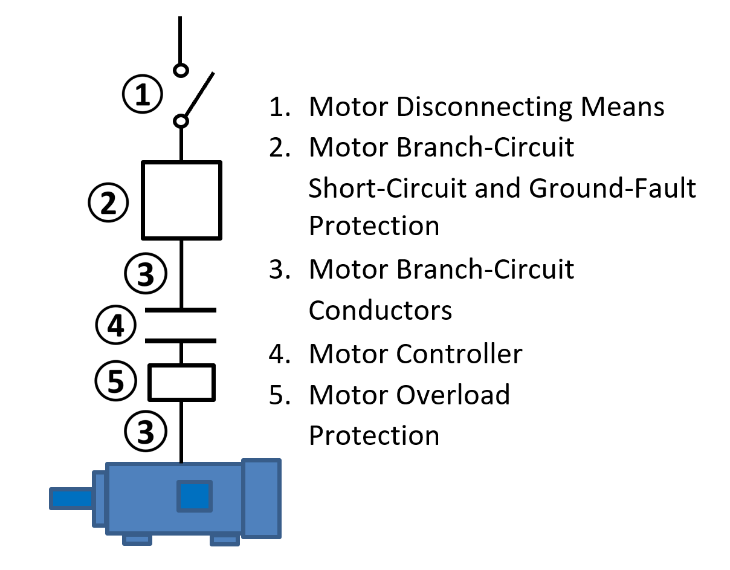OCPD to VFD, minimum conductor size is 125% of VFD Input Current Rating (NEC 430.122).
OCPD is sized per VFD instructions (NEC 110.3(B)), but are usually listed as MAXIMUMS, so anything smaller is dealer’s choice. But also pay attention to the instructions. MANY smaller VFDs are ONLY listed by UL with fuses or SPECIFIC circuit breakers, as in brand and model number. This is becoming more and more prevalent because UL listing rules have recently changed. So don’t be caught off guard.
VFD to motor conductors, standard NEC 430 rules for motor circuit sizing applies, nothing special (125%of motor FC from NEC charts).
If there is a disconnect ahead of the motor, it does not change the conductor sizing, but NEVER put a fused disconnect downstream of a VFD, and use an aux contact in the disconnect to send a “disable” signal back to the VFD, most instruction manuals will describe this.
Side note regarding sizing of the VFD; to ensure success, learn the difference between “Variable Torque / Norml Duty” vs “Constant Torque /Heavy Duty” ratings. Basically if it is a centrifugal pump or fan, it is Normal Duty, EVERYTHING else should be sized as Heavy Duty.
Also, ALWAYS size a VFD per the motor nameplate FLA, NOT the HP, because on some motors, the FLA is much higher than normal. And although as electricians we rarely get to be involved in this part, some people like to use motors into their Service Factor, even though the motor mfrs tell you that you cannot do that if running from a VFD. If you see something, say something.

